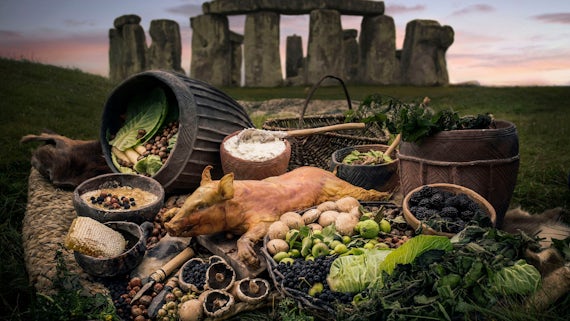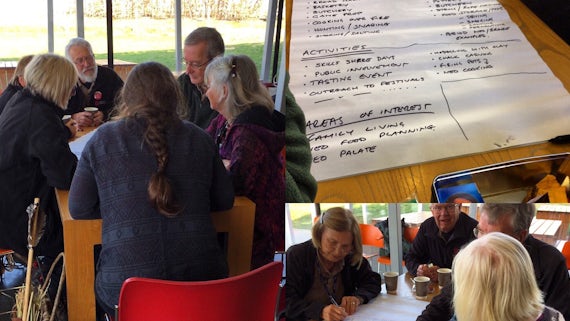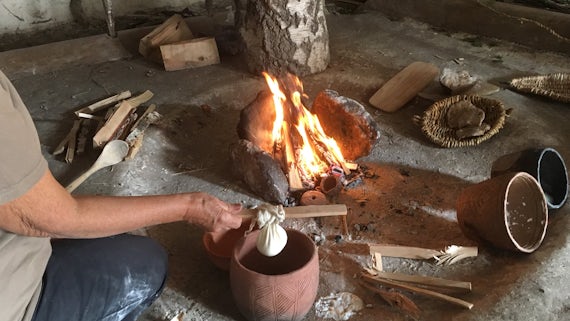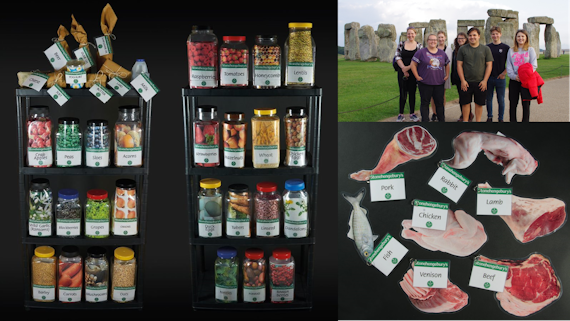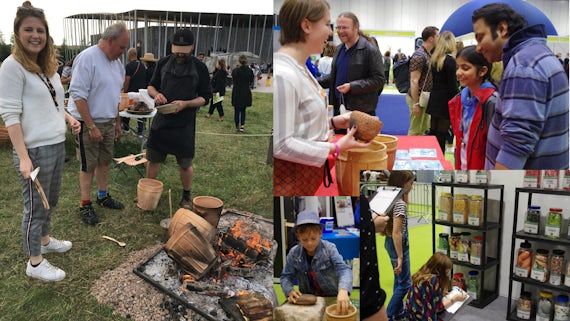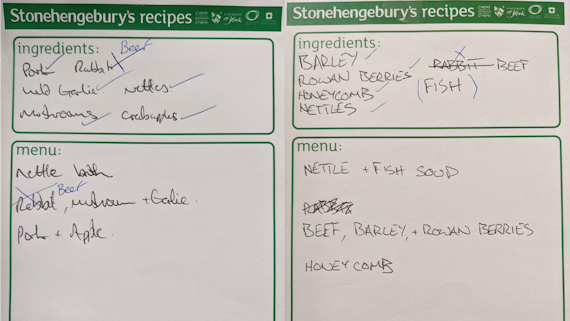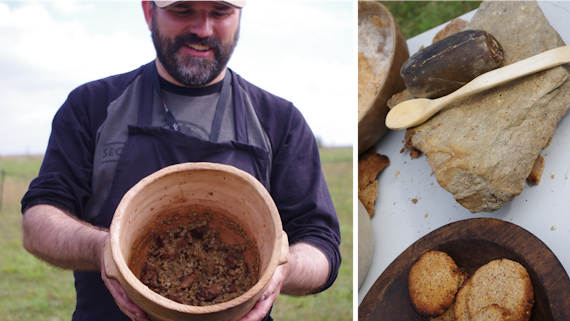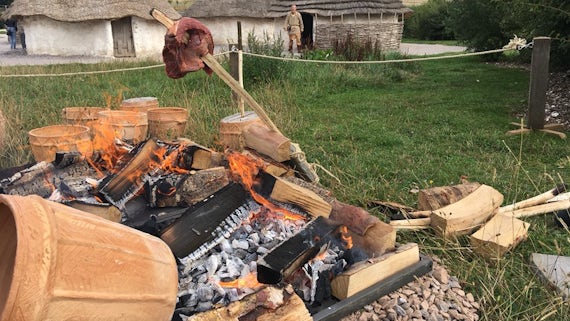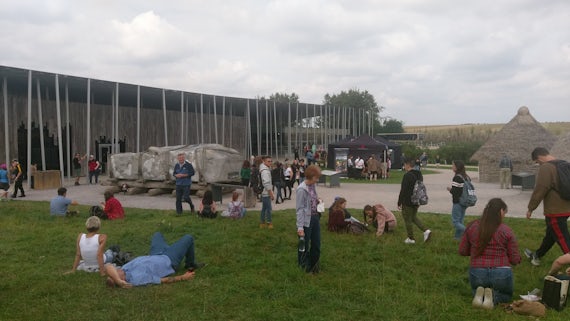Consuming Prehistory: changing attitudes to food and enhancing heritage practice
Cardiff University archaeologists have overturned our understanding of prehistoric food, farming and feasting, creating a change in heritage practice.

Challenging assumptions on what and how people ate in prehistory, the Consuming Prehistory (CP) research project has confirmed the social and cultural significance of food in prehistory through international-scale research and innovative bioarchaeology.
The team examined farming, feasting and food in prehistory in a series of major projects (2008-2019) to reveal changes in farming practice, extraordinary feasting food miles and a far more diverse diet than previously understood.
Combining innovative Guerilla Archaeology engagement tactics and their ground-breaking findings, the research team engaged with over half a million people, sharing its findings at heritage sites, community workshops, and major UK festivals.
Testament to the project’s quantitative and qualitative success, the research has influenced heritage practice, embedding research-led change in site usage at Britain’s most famous prehistoric monument, Stonehenge. The collective research shaped the ‘Feast’ exhibition at Stonehenge and created a programme of events at Stonehenge and across the UK. English Heritage benefitted from increased annual visitor numbers, an enhanced visitor experience, and volunteers upskilled.
The role of food in prehistoric society
The research has helped transform understanding of the economic, social and cultural role of food in the past.
Large-scale application of direct dating and Bayesian statistics refined understanding of farming introduction in the UK and Europe, a profound shift in food acquisition. Cardiff University bioarchaeologists also developed new methodologies to investigate ancient diets and food provenance by refining strontium isotope analysis and integrating zooarchaeology with lipid residue analyses. Significantly, they found preference (from fishing to dairying) and agency (overcoming lactose intolerance by milk processing) far outweighing pragmatic choices in prehistoric diet.
The project revealed a picture of extensive mobility providing the most detailed insight yet into the diversity of people undertaking rituals at Neolithic monuments, with provisioning spanning the length of the British Isles.
Taking prehistory into the 21st century through engagement and heritage practice
Underpinned by Cardiff University research, the Feast exhibition at Stonehenge (2017-18) attracted over 560,000 visitors, enhanced visitor experience, and redefined presentation of the past. With one in seven visitors stating that the exhibition strongly influenced their decision to visit, it formed part of a 14.5% increase in visitor numbers from the previous year.
The isotope analyses and interpretations conducted by Richard Madgwick and Jacqui Mulville formed a significant part of the research presented in the Feast exhibition. Knowing that people and animals travelled over long distances to the area completely changes how we think about the people who built Stonehenge, who they were and where they may have come from.
Spearheaded by Professor Jacqui Mulville, engagement collective Guerilla Archaeology harnesses archaeology to challenge common assumptions, using its innovative engagement framework in non-traditional settings with hard-to-reach audiences.
Adopting this tried and tested framework, the Consuming Prehistory team created its programme of interactive events which saw more than 20,000 people get hands-on with activities ranging from recipe creation and prehistoric gardening, to a pop-up immersive Neolithic shop, Stonehengebury’s. It culminated with the Big Feast Weekend (BFW) festival hosted at Stonehenge, a novel use of the site.

Key stats: Guerilla Archaeology – Feast engagement
- 17 events held in 13 UK locations (including Glastonbury)
- Travelled back 5,000 years
- Engaged with 20,000 visitors
- 5,500 hours of volunteer time
- 10 feasts cooked
- 12kg of grain ground (262 hours of grinding)
- 40 ingredients in Stonehengebury’s pop-up
- 9,354 recipes shared
- 1,220 grow your own kits given away
- 190k Twitter views
- 40k Facebook views
English Heritage has since adopted the Feast approach as best practice, incorporating new research and varied site use in their longer-term engagement strategy. Training events led by the research team with English Heritage volunteers opened access to new knowledge, increased confidence, and empowered them to deliver new demonstrations and projects.
Together, the Feast exhibition and Big Feast Weekend evidenced powerful experiential indicators including higher satisfaction rates, greater visitor diversity, and increased visit duration. They, along with wider UK-wide festivals created knowledge change in visitors’ understanding of prehistoric technology and food, with participants making striking links to modern experience.
I had no idea that the first farmers were lactose intolerant… It makes the past more relatable and gives me evidence when people say intolerances are a modern fad!
The project has changed public understanding of prehistoric food globally, with:
- 230,000 Consuming Prehistory social media interactions
- 41,700 unique views of English Heritage’s Feast exhibition resources
- 173,000 views of Neolithic cheese-making video
- 7,200 views and 3,000 downloads of tailored education resources (Key stages 2, 4, 5)
- 385 media pieces from Australia to the USA
Stimulating debate about Neolithic food at festivals, archaeological sites, and online, the Consuming Prehistory project has had lasting impact on the presentation of food in prehistory and heritage practice.
Meet the team
Key contacts
Publications
- Madgwick, R. et al. 2019. Multi-isotope analysis reveals that feasts in the Stonehenge environs and across Wessex drew people and animals from throughout Britain. Science Advances 5 (3) eaau6078. (10.1126/sciadv.aau6078)
- Mulville, J. 2019. Exhibitions, engagement and provocation: From future animals to guerilla archaeology. In: Bjerregaard, P. ed. Exhibitions as Research: Experimental Methods in Museums. Abingdon: Routledge. , pp.131-147.
- Cramp, L. J. E. et al., 2014. Immediate replacement of fishing with dairying by the earliest farmers of the northeast Atlantic archipelagos. Proceedings of the Royal Society B: Biological Sciences 281 (1780) 20132372. (10.1098/rspb.2013.2372)
- Madgwick, R. , Mulville, J. and Evans, J. 2012. Investigating diagenesis and the suitability of porcine enamel for strontium (Sr-87/Sr-86) isotope analysis. Journal of Analytical Atomic Spectrometry 27 (5), pp.733-742. (10.1039/C2JA10356G)
- Whittle, A. , Healy, F. and Bayliss, A. 2011. Gathering time: Dating the Early Neolithic enclosures of southern Britain and Ireland. Oxford: Oxbow Books.
